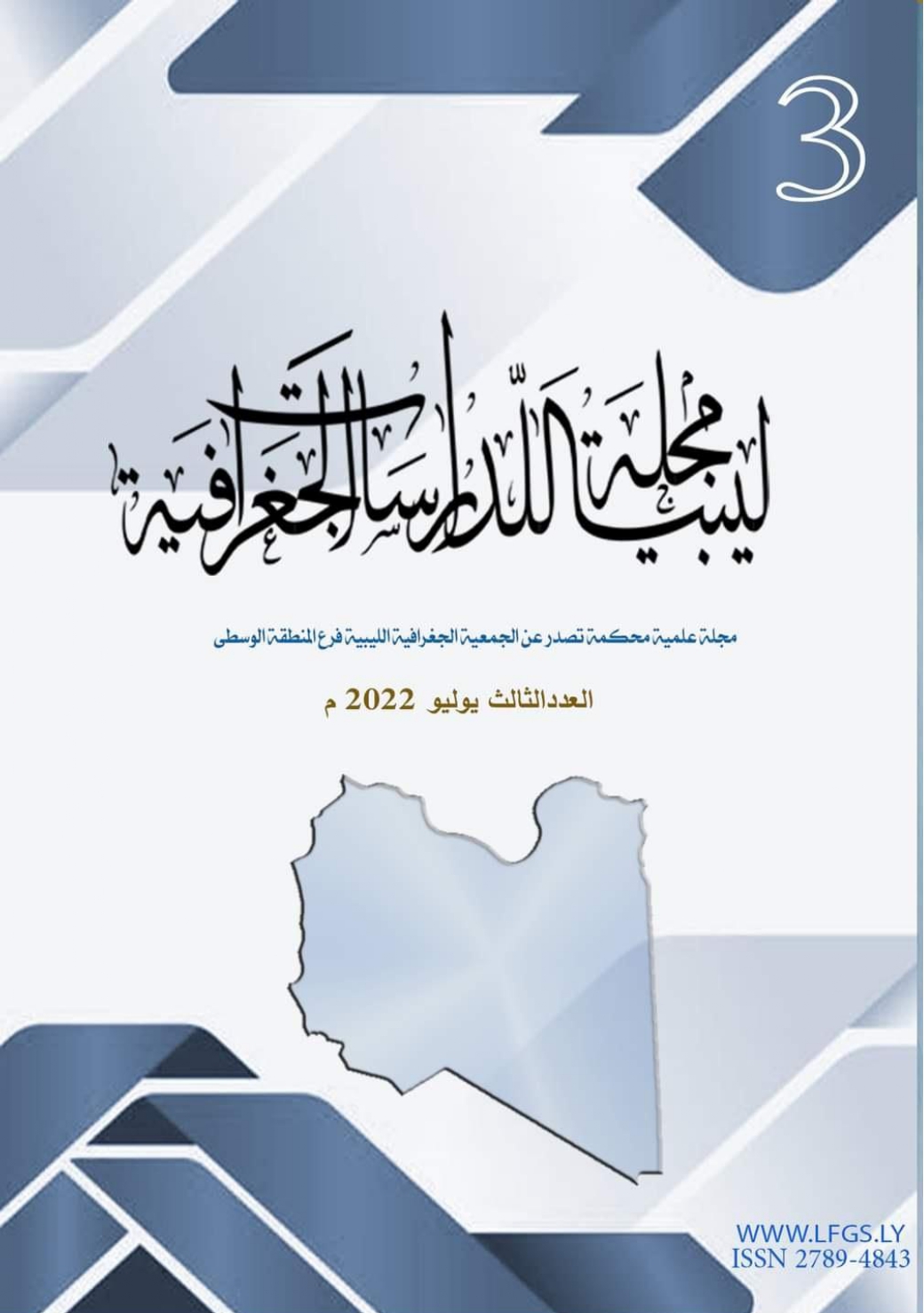Basic geomorphologic map of the coastal area between the cities of Susah and Karsah in the Jabal Al-Akhdar region – Libya
DOI:
https://doi.org/10.37375/jlgs.vi3.1755Keywords:
map, geographic information systems, cartographyAbstract
Drawing a geomorphologic map of the study area in Al-Jabal Al-Akhdar, providing a classification of relief based on morphological criteria and containing clear morphological content with some morphological elements.
Geomorphologic mapping is one of the main research methods in geomorphology, as it is not only of scientific importance, but also of practical importance. The area lies between 21 and 59 and 22 and 12 east and between 32 and 45 and 32 and 58 north latitude. The basis of the work was a topographic map with a contour interval of 20 m and a scale of 1 to 50,000. Geomorphologic features were recognized from the map such as coastal plain, cliffs, steps, etc. to produce a preliminary map of major features. This was followed by a careful analysis of the stereo pairs of the aerial photographs (the pairs of the aerial photographs were examined using stereoscopic, and the scales of the photographs were 1:20000, in order to obtain detailed observations that were not shown by the topographic or geological maps. A variety of data sources were used to create the geomorphologic map) by which the shape, extent and location of geomorphologic features on the topographic map have been improved and confirmed
This research reviewed the main geomorphologic phenomena present in the study area and their distribution, as a basis for further assessment of land and land use planning in the region, and thus they are considered important tools to guide spatial planning correctly in those areas, of which the study area is one of them.
References
Cooke RU, Doornkamp JC. 1990. Geomorphology in environmental management, A New Introduction. Clarendon Press: Oxford
Disio, Ardito, Outline and problem of the geomorphology evolution of Libya from Tertiary to present day, paper presented at the symposium at Tripoli, April 14-19/1969, (ed. By Carlyl Grye) Faculty of Science, University of Libya), 1971.
Dramis F, Guida D, Cestari A. 2011. Nature and Aims of Geomorphological Mapping. In Geomorphological Mapping: methods and applications. Smith MJ, Paron P, Griffiths J (eds.). Elsevier: London, 39-74
Dykes AP. 2008. Geomorphological maps of Irish peat landslides created using hand-held GPS. Journal of Maps 2008: 258-276
Gregory,J.W., The geology of Cyrenaica, O.J.Geol.Soc(London), Vol.67,No.268,1911.
Hey,R.W., The Geomorphology and Tectonics of the Gebel Akhdar (Cyrenaica), Geological Magazine, Vol.x cill, No.T., 1956.
Hey,R.W; 1968. The geomorphology of the Gabal Al Akhdar and adjoining area, in Barr, FT, (ed) Petroleum exploration Society of Libya, Tenth Annual Field Conference
Lee EM. 2001. Geomorphological mapping. Geological Society Special Publication (18): 53-56
Knight J, Mitchell W, Rose J. 2011. Geomorphological Field Mapping. In Geomorphological Mapping: methods and applications. Smith MJ, Paron P, Griffiths J (eds.). Elsevier: London, 151-188
Paron P, Claessens L. 2011. Makers and users of geomorphological maps. In Geomorphological Mapping: methods and applications. Smith MJ, Paron P, Griffiths J (eds.). Elsevier: London, 75-106
Pietersz, C. R., Proposed Nomenculture for rocks units in northern Cyrenaica, Petroleum Exploration Society of Libya, Tenth Annual field conference, (ed. By F. T. Barr),1968.
Smith MJ, Griffiths J, Paron P (eds.). 2011. Geomorphological Mapping: methods and applications. Elsevier: London
Rohlich, P., Tectonic Development of Aljabal Al Akhdar , the Geology of Libya , volume3 (Ed. By M. J. Salem and M. T. Busewil), University of Elfateh, 1980.
Rohlich, P. 1974. Geological map of Libya. 1: 250,000 sheet NI 34-15, Al Bayda Explanatory Booklet, Indust. Res. Cent; Tripoli.
Secretaria of Agriculture, Hydrogeo Consulting Engineeres S.P.A., Water Resources study, Baydah, Bayyadah Area, Ttechnical report Geomorphology and Geology, 1986.
Stefanini,G. 1921. Fossili terziari della Cirenaica, Paleontol. Ital., 27, 101 - 146, Pisa.














